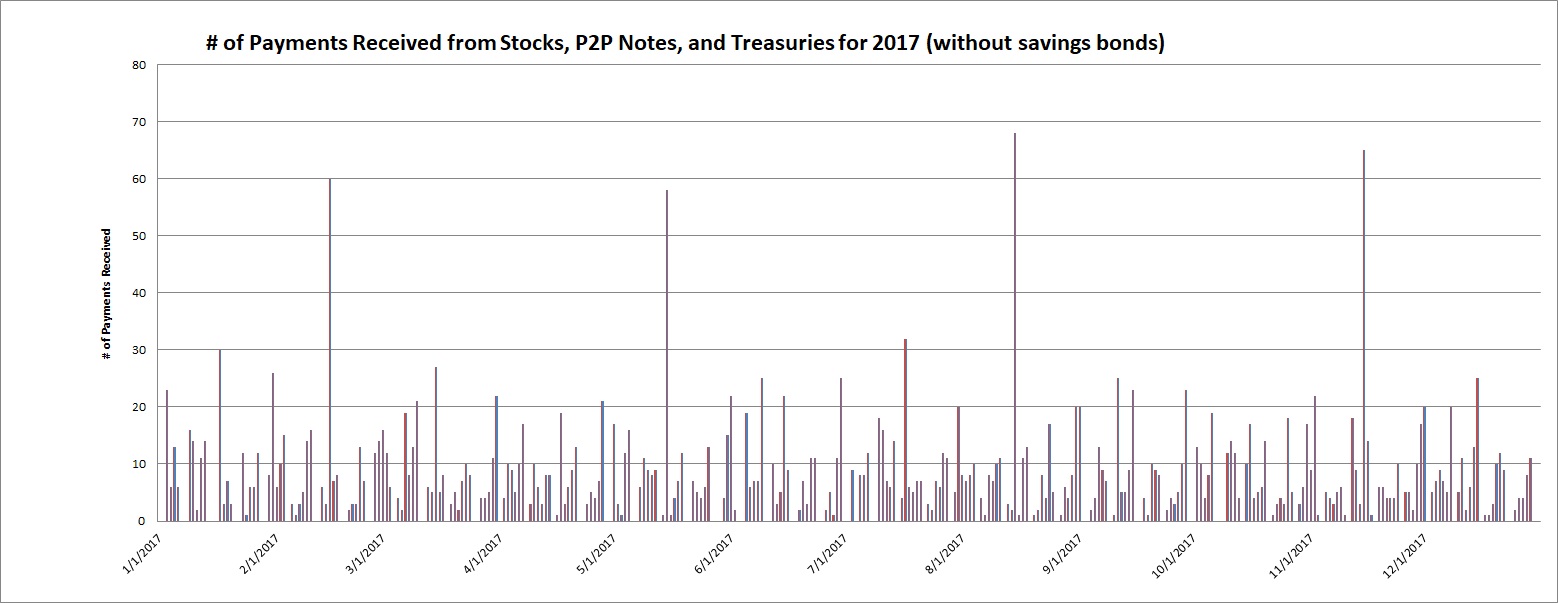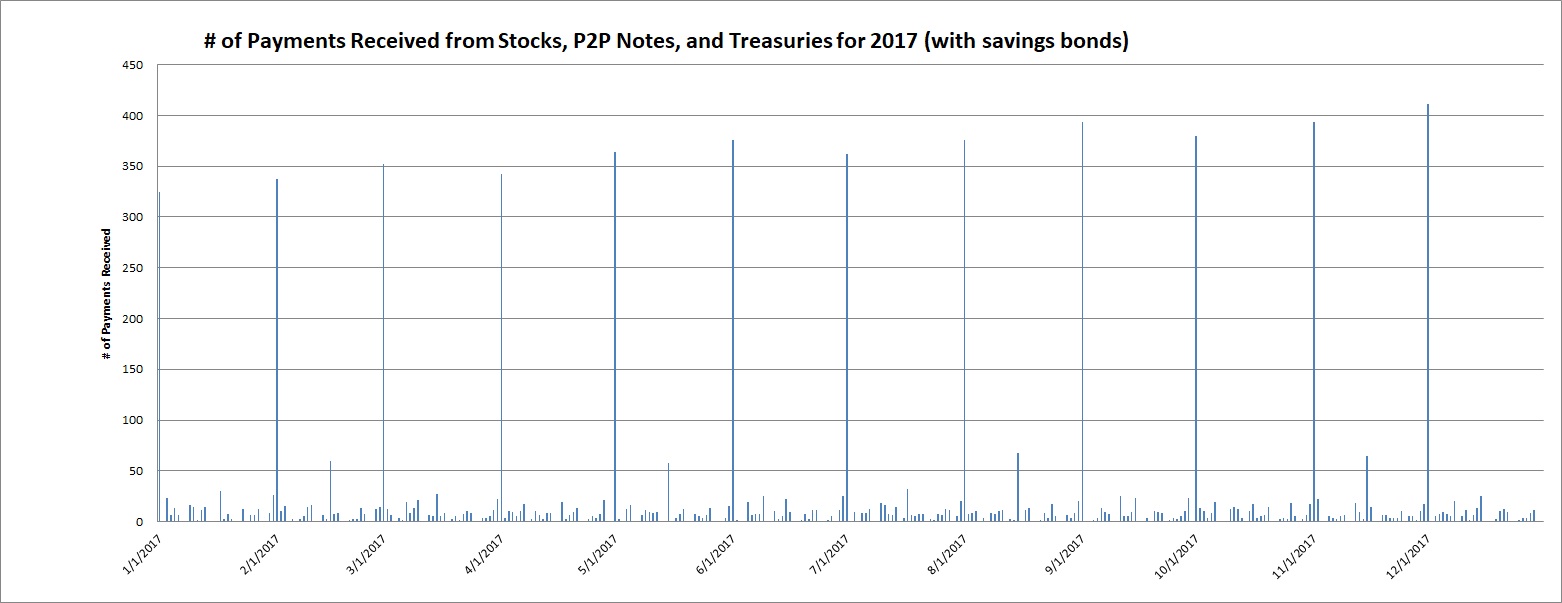Receiving Investment Income Everyday, Part 5
5/7/18
In my original Receiving Investment Income Everyday article, I tallied the days of the year that I received dividend or interest payments from stocks, Treasuries, and peer to peer notes for the year 2013. I did this because while some concentrate on total yearly or monthly income, I wanted to concentrate on daily income. It is one of my investing goals to get paid from a variety of reliable sources literally everyday, or as close to that as possible.
I just completed tallying the numbers for the year 2017, and I present them in this article for your reading pleasure.
In 2017 I received 858 dividend payments from monthly, quarterly, biannual, and yearly dividend payers that I own.
Currently, about 13% of my stocks are monthly dividend payers, 74% quarterly dividend payers, 4% biannual dividend payers, 0% yearly dividend payers, and the remaining 9% do not pay any dividends.
Of course, these 858 received dividend payments did not all fall on different days; there was a lot of overlap in the payment dates. I omit the table here, but there are 210 days total where I received at least one dividend from stocks.
However, this is just dividend payments from stocks. What about my payments from other investments, such as interest payments from P2P notes and interest payments from Treasuries? How much more would these payments "fill in" things?
Adding in payments from the P2P notes I own, as well as from Treasuries (I have Bills, FRNs, Notes, Bonds, and TIPS of all types of maturities), we get 281 days.
Although I have been buying and holding EE and I savings bonds since 2012, the analysis for 2016 was the first time I included them in the analysis. Each savings bond pays on the first of the month. Adding these into the analysis for 2017, we get 285 days. We can see that while savings bonds added a lot more payments, there is a ton of overlap in the payment dates so they only added a few days where there wasn't a payment already. In other words, adding savings bonds took us from 281 to 285 days even though it increased the total number of payments by 4,295 payments.
Graphically, the counts of the payments received from stocks, P2P notes, and Treasuries (except savings bonds) for 2017 looks like:

If we now include the savings bonds in the analysis, the counts of payments received for 2017 looks like:

One can clearly see the monthly and quarterly spikes of payment counts.
Note that for 2013, my % of the days in a year which I was receiving income from investments was 184/365 or ~50%. For 2014, this ratio was actually 289/365 ~ 79.18%. For 2015, this ratio was 229/365 ~ 62.74%. For 2016 this ratio is 258/365 = 70.68%, and for 2017 it is 285/365 = 78.08%
You might be wondering about the distribution of payments from stocks, P2P notes, and Treasuries. The distributions of the number of payments and the payment amounts is below:
Investment Type |
% of Number of Payments |
% of Total Payment $ |
Stocks |
32.79% |
53.02% |
P2P Notes |
48.95% |
24.82% |
Treasuries |
18.27% |
22.16% |
For 2017, I had a lot of "lessons learned". First, I did a much needed rebalancing of my entire portfolio. Second, the Federal Funds rate keeps increasing which is nice as far as Treasuries go. Last, I learned I liked the theory of focusing on monthly dividend paying companies from 2013 to 2017, but have now changed my mind somewhat as to their importance. As I noted last year, the "talent pool" for monthlies is not as good as quarterlies, for example. I experienced this by having some companies cut or reduce their monthly dividend payments or simply go bankrupt. I think it is more important now to not say get paid literally everyday (although that would still be nice!), but to increase the average payment per day, and increase it with quality companies and Treasuries. So because of this, my 2018 article will look a lot different probably, as I reduced the number of stocks from over 100 to a mere fraction of that.
I also learned that starting a side business, and putting the money earned into quality investments with yields, is quite nice. If I get paid literally everyday from that side business, is that not from an investment of my time, talent, energy, etc.?
Please anonymously VOTE on the content you have just read:
Like:Dislike: